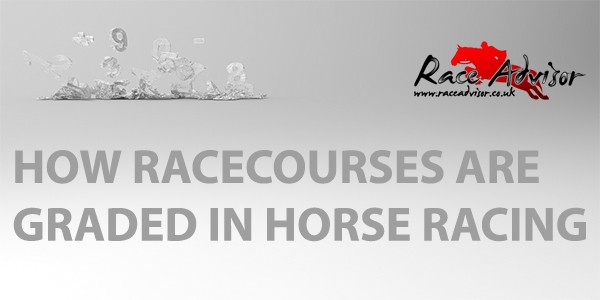How Racecourses Are Graded In Horse Racing

How Racecourses Are Graded
If you are relatively new to horse racing, all the talk about courses, grades and classes is more than a bit perplexing. For a start, jump races (also known as National Hunt) and flat races have separate ‘grades’ and ‘classes’ but don’t confuse the grade of a ‘race’ with the grade of an actual racecourse.
In British and Irish horse racing, there are technically 4 different grades (1-4) or (A-D) depending on who you listen to. The British Horseracing Authority (BHA) doesn’t seem to pay a great deal of attention to racecourse grades given the relative lack of information available.
The HBLB
It turns out that cold hard cash is the main criteria for grading racecourses. Grades are based on official Horserace Betting Levy Board (HBLB) and BHA general prize fund figures and are updated on an annual basis. In simple terms, the higher the prize money offered by racecourses, the higher its grade.
It is the HBLB which allocates prize money via the courses and this is paid to the racehorse owners in accordance with the rules laid out by the BHA. In 2015, there will be a total of 1,471 racing fixtures scheduled and the HBLB will be offering prize money for 1,314 of these fixtures.
The majority of the events are known as Racecourse Fixtures and the prize money is determined via a formula which is based on the amount of cash contributed by the racecourse itself in the forthcoming year. This formula is known as ‘Merit’ and is combined with the amount of turnover generated off-course at fixtures in years gone by.
The amount of money provided by the HBLB under the above system is called the General Prize Fund (GPF) and this makes up approximately 65% of the HBLB’s annual budget. Once the HBLB decides on the GPF, the amount the racecourse receives for every fixture is based on the total prize fund of the day along with the fixture’s designation.
The 2015 General Prize Fund
For your information, here are the top 5 racecourses in terms of GPF grants for 2015:
- Newmarket (Flat): £2,311,500
- Ascot (Flat): £1,786,700
- Cheltenham (Jump): £1,533,100
- Goodwood (Flat): £1,518,300
- York (Flat): £1,406,400
Indeed, Doncaster racecourse is the only other one to have a GDF grant of over £1 million in 2015. It should be noted that courses such as Doncaster, Ayr and Carlisle host flat and jump racing; this means they receive different GDF grants for each which may lead to a different grade for its jump and flat racing.
Some Racecourse Grades
As at January 2015, there were 59 racecourses operating in Britain so I won’t be providing you with all of their grades. Instead, I’ll add a handful for each grade.
Grade 1
As these courses offer the highest prize money and have the most prestigious races, the world’s top trainers specifically prepare their best horses for these events. Since you will see the best races at Grade 1 courses, you will also be asked to pay much higher entry fees:
- Ascot
- Newmarket
- York
- Aintree
- Cheltenham
Grade 2
These courses typically feature races that are build ups to major events such as the Aintree Grand National or Cheltenham Gold Cup. It isn’t uncommon to see the best horses at Grade 2 courses:
- Chester
- Sandown
- Haydock
- Ayr
Grade 3
It is rare to see a high quality horse in action at a Grade 3 course unless it is returning after a long layoff. However, these courses can be great places to spot stars of the future:
- Ripon
- Beverley
- Pontefract
- Musselburgh
Grade 4
For lack of a better term, Grade 4 racecourses are generally home to plodders but for many race lovers, events at these courses are a lot more fun than at their Grade 1 counterparts. Entrance fees are low and there is less stress than at big events. If you’re lucky, you may occasionally witness classy horses in action that are being built back up after an injury:
- Carlisle
- Catterick
- Brighton
- Bath
In a nutshell, racecourses are graded according to the prize money offered. As a consequence, the higher the grade, the more expensive the entrance fees but you’ll see better quality horses and quite possibly find value bets.
also of course ! they grade the races at every race track so I think something could be worked out via say the handicaps i.e.. is a grade 3 handicap at a group 1 racecourse better form than a grade 3 handicap at a group 2 racecourse ? which of course relates to the prize fund also beside the toughness of the conditions i.e.. an undulating track or a flat track and so forth . and also there is the betting forecast to consider and trainer form . plus distance and going allowances etc. so the only way to sort out as above on a daily basis is via the racing post ratings or the timeform rating etc., which is a different subject of its own and needs a lot of working out ? before you bet .
You’ve pretty much nailed it on the head Peter 🙂
Epsom not mentioned? Surely the Derby, the Oaks and the Coronation Cup alone should figure in these calculations.
…… .IS the main CRITERION not “criteria”